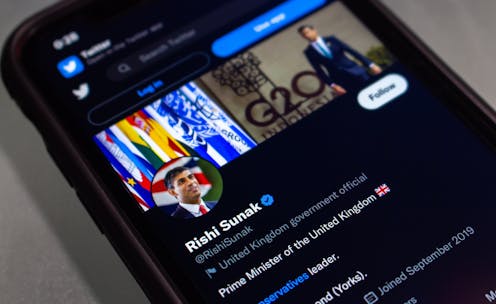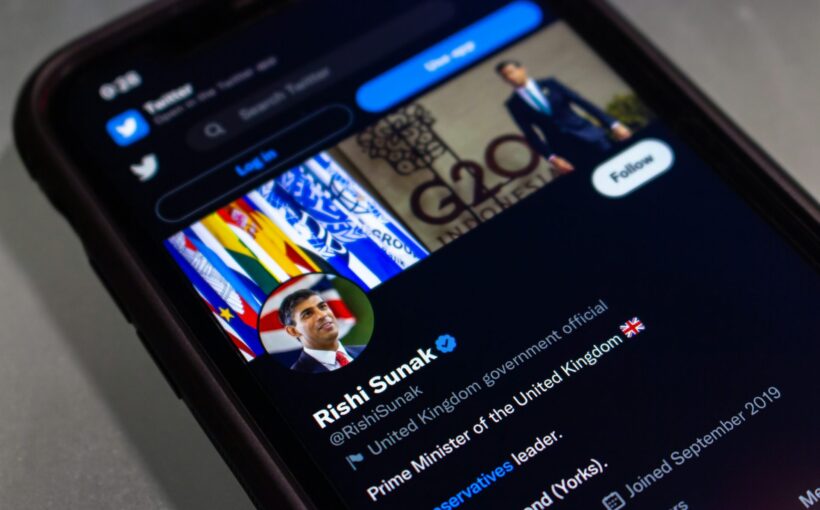
The election has commenced and the race is on – to amass as many likes, shares and comments as possible. Digital campaigning, particularly through social media, is now a key part of political candidates’ communication toolkit.
In fact, every general election campaign since 1997 has at some point been lauded as the first to make effective use of digital campaigning. But it was in 2015 that David Cameron’s campaign first made strategic use of social media to drive an election victory.
As political reporter Tim Ross outlines in his excellent book, Why the Tories Won, Cameron’s team used a playbook developed by Barack Obama’s 2008 US presidential campaign. With the help of Obama’s digital guru Jim Messina, the Conservatives used targeted Facebook advertising to reach voters in key seats and secure an unexpected victory.
In the 2019 general election, Boris Johnson’s team swamped Facebook with messages every 15 minutes about the need to “Get Brexit Done”. They not only wanted to mobilise their existing supporters but to get them to share posts with persuadable, undecided voters.
When supporters share content with their own networks, messaging can reach supporters of other parties, or other “floating” voters. One digital campaigner I interviewed about the 2019 UK general election said:
My favourite shares are the ones that say: ‘I don’t normally agree with Corbyn or Labour or Momentum – but I agree with this.’ Then you’ve reached someone, and they’re showing that content to people who presumably feel the same way.
But the evidence is mixed on just how effective such campaigning is at reaching and persuading voters. A study conducted during the 2010 US midterm elections found unmistakable evidence that seeing political communication on a friend’s social media page directly influenced voters’ behaviour. The study found that not just those users who were directly targeted were affected, but also their friends, and friends of friends.
This echoed decades-old findings on two-step communication theory, which explains how information flows from the media to opinion leaders, and then to the wider public. But more recently, a consensus has emerged that the persuasive effects of political advertising are, on average, small.
In 2016, researchers conducted randomised experiments on 34,000 people’s voting preferences during the US presidential election. They found that any political advert’s persuasive effect on voters was small but detectable.
The pitfalls of digital campaigning
Campaigners want voters to be exposed to repeated and consistent key messages. This tactic, sometimes referred to as “water dripping on stone”, has been used by digital election consultants Topham Guerin on several successful campaigns – including for the Conservatives in 2019.
Both main parties have already launched digital campaigns on TikTok, and begun rolling out attack memes. New spending limits mean parties are likely to spend even more money creating content tailored to each platform.
X (formerly Twitter) is regarded by the main parties as of little importance beyond influencing journalists who are hopelessly addicted to it. But Facebook still has reach with older voters, a key demographic for the Conservatives, and Instagram and TikTok will be essential to reaching younger voters.
Other platforms like streaming platform Twitch, as well as relationships with influencers, are also likely to be evident in this campaign.
Parties will also be hoping that content generated by voters, such as memes and shortform videos, may help their cause – or at least, hurt their opponents. Peer-to-peer platforms such as WhatsApp will be especially important here, but are also difficult to monitor for disinformation.
Political parties themselves also risk falling victim to the belief that social media is everything. While the power of the press is no longer what it once was, there are still moments when broadcasters and newspapers can set the agenda, such as during the televised debates. And while younger people may be more prolific users of social media, they are also the demographic least likely to vote.
In the 2017 and 2019 election campaigns, Jeremy Corbyn’s Labour Party demonstrated its prowess in digital communication, using videos and memes to amass millions of views. However, in 2019, the party had its worst result since the 1930s. Online popularity does not always match up with voters’ actual views.
After the 2019 election, a comprehensive report commissioned by the party from the thinktank Labour Together heavily criticised its digital approach. The report said Labour’s supporters online “spent too much of the campaign talking to themselves rather than reaching out to convince swing voters”.
As political scientist Andrew Chadwick has argued, influence flows from mainstream media via social media to parties, activists and supporters and back again. It is a constantly changing landscape, and campaigners should not overestimate the importance of going viral.
The central lesson from 2019 will be not to believe the hype. Success on social media won’t mean a thing, unless it’s matched with real-world activity that persuades voters to go out and support you on election day.
![]()
Matt Walsh is a trustee of The Conversation UK.



